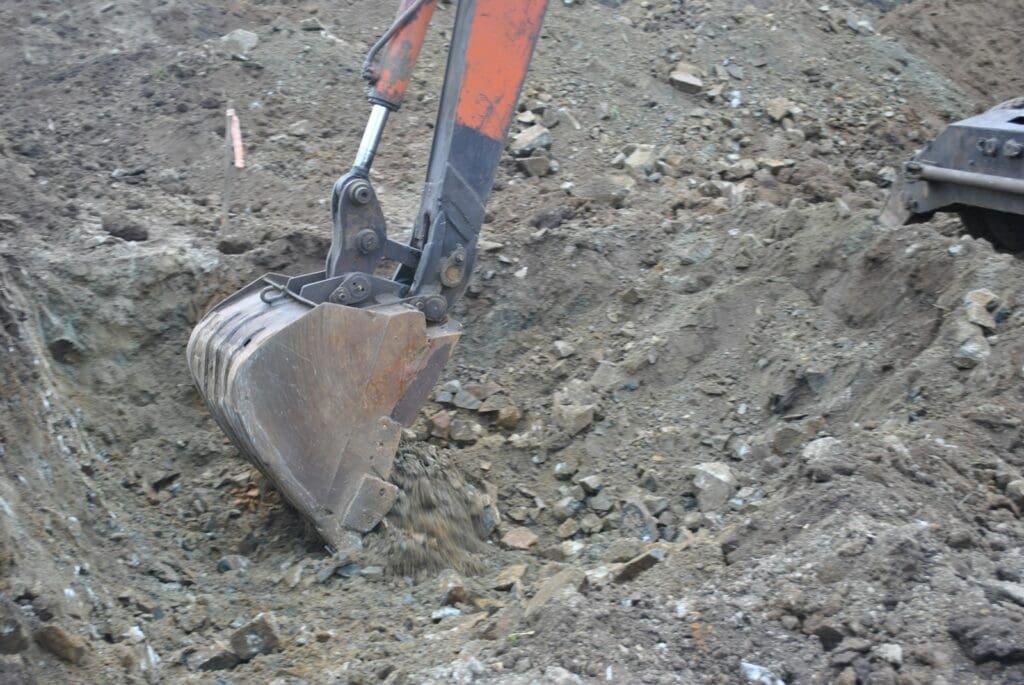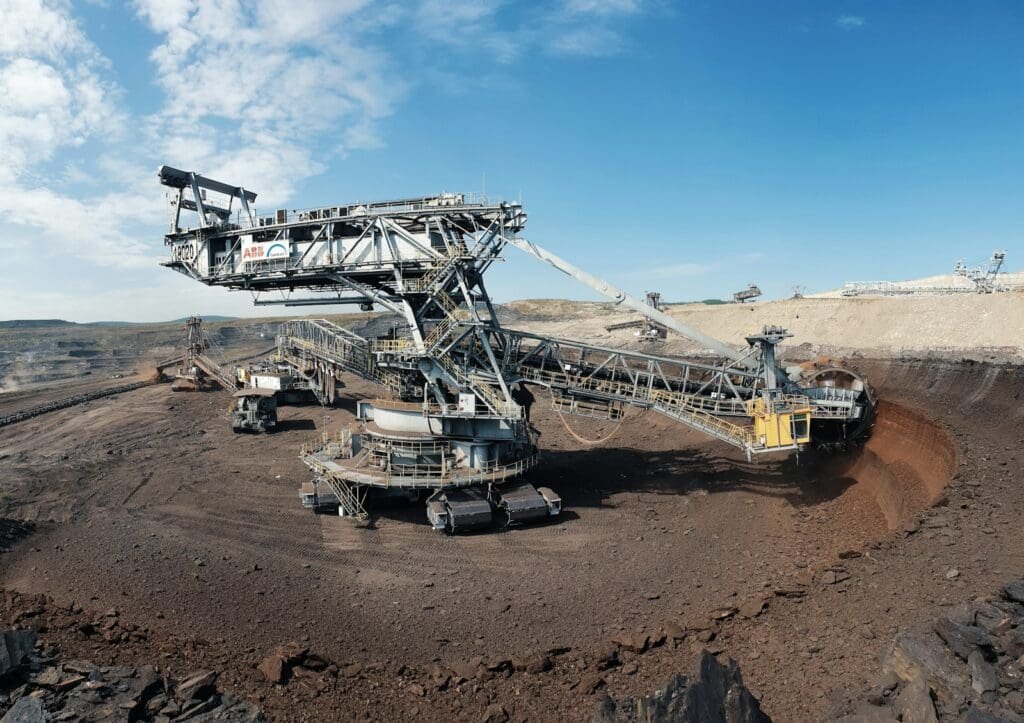An Overview of Over Excavation Strategies
If you’re wondering why we dig deeper than the planned depth, or if the type of soil affects a building project, then you’re in the right place.
We will cover a variety of topics in this article, starting from the purpose and benefits of over excavation, and the situations that may necessitate such an approach.
Ever thought about how the type of construction impacts the need for over excavation? Or have you grappled with managing those increasing construction costs?
We’ll discuss these issues and share strategies and solutions to overcome such challenges.
We’ll explore the important equipment and technology used in over excavation and highlight critical safety measures while excavating. We’ll address regulatory compliance, the importance of soil testing and analysis, and more.
So, let’s dig deeper and start exploring!
Table of Contents
Over Excavation in Construction

Purpose of Over Excavation
Over excavation is the process of digging beyond the planned depth of the foundation or trench. It’s an essential task in the construction process aimed at ensuring the stability and durability of the structure.
Key Benefits
- Improving Soil Stability: It helps to remove weak or unstable soil layers and replace them with more stable materials, preventing future settling issues.
- Enhanced Load-Bearing Capacity: Replacing poor-quality soil with compacted fill can increase the ground’s load-bearing capacity.
- Ensuring Uniformity: Creates an even and consistent base, essential for laying foundations and other structural elements.
- Prevention of Water Accumulation: Helps with proper drainage around the construction site, reducing risks of water-related damages.
Common Situations for Over Excavation
- Soft Soils: In areas with loose or soft soil, over excavation is necessary to reach firmer ground.
- Contaminated Soils: Removing contaminated soil to avoid future environmental hazards.
- High Water Table: When the water table is too high and the soil becomes saturated, over excavation can help manage water levels.
- Structural Integrity: For structures requiring extremely stable ground, such as high-rise buildings or heavy-load areas.
Steps Involved in Over Excavation
- Site Assessment: Surveying the site to understand soil conditions and identify areas needing over excavation.
- Excavation: Removing the specified amount of soil beyond the planned depth.
- Backfilling: Placing stable materials, such as compacted gravel or concrete, into the excavated area.
- Compaction: Compacting the fill materials to ensure maximum stability.
- Quality Control: Testing the stability and consistency of the fill materials.
For a detailed explanation on soil-related issues, refer to this resource from Concrete Network.
Factors Influencing Over Excavation
Soil Condition
The condition of the soil plays a significant role in over excavation. In instances where the soil is composed of mainly clay or silt, the chance of soil compression and instability is higher, necessitating over excavation. In contrast, sandy or gravel-based soils often have superior load-bearing capacities, potentially eliminating the need for extensive over excavation.
Type of Construction
The type and scale of the construction project can also dictate the need for over excavation. Heavy constructions, like multi-story buildings or industrial complexes, typically exert greater stress on the soil, often necessitating more thorough excavation. On the other hand, less-demanding projects, such as single-story residential buildings, may allow for limited or even no over excavation.
Over Excavation Challenges and Solutions

Increased Construction Costs
While over excavation provides several benefits, it also comes with challenges – the primary being the increased cost of construction. This process requires additional manpower and equipment, driving up the overall project budget.
Solutions to this challenge can include using specialized excavation equipment to maximize efficiency or hiring experienced crews who can complete the excavation in less time, reducing labor costs.
Environmental Impact
Over excavation can have a significant environmental impact, the severity of which often depends on the size of the project and the excavation depth. These impacts can include disruption of natural habitats, increased risk of soil erosion, and potential water contamination.
Sustainable construction practices, such as using recycled materials for backfilling or employing erosion control measures during and after excavation, can help mitigate these environmental impacts.
Timing and Weather Conditions
Project timelines and weather conditions can heavily influence the feasibility and effectiveness of over excavation. Wet weather can make it more challenging to excavate and compact the fill materials effectively.
Construction firms can overcome this challenge by closely monitoring weather forecasts and adjusting their excavation schedules to avoid wet conditions whenever possible, or by using water-resistant materials during rainy seasons.
For more on the environmental impact and sustainability in construction, check out this informational EPA guide on green infrastructure.
When Excavating: Additional Considerations for Over Excavation

Equipment and Technology Used in Over Excavation
Modern construction relies heavily on specialized equipment and technology to perform over excavation efficiently and safely. Here are some key pieces of equipment and technological advancements used in the process:
- Excavators: Heavy-duty excavators, including tracked or wheeled types, are essential for digging deep and wide areas. Various attachments, such as buckets or hydraulic breakers, enhance their versatility.
- Loaders and Backhoes: These machines help in moving excavated soil and distributing fill materials uniformly.
- Compactors: Vibratory plate compactors, sheepsfoot rollers, and pneumatic tampers are used to compact the backfilled materials, ensuring stability and preventing future settlement.
- Laser Leveling Systems: Advanced laser leveling systems help maintain precise depth and alignment, reducing human error and enhancing the quality of over excavation.
Safety Measures During Over Excavation
Excavating beyond the planned depth poses several risks. It’s crucial to follow stringent safety protocols to protect workers and the construction site. Key safety measures include:
- Shoring and Bracing: Implementing shoring systems helps prevent trench collapses and ensures the stability of vertical faces.
- Protective Gear: Workers should wear appropriate personal protective equipment (PPE), such as hard hats, high-visibility vests, and steel-toed boots.
- Site Monitoring: Continuous monitoring for signs of soil movement or hazardous conditions can prevent accidents. Geotechnical engineers often use inclinometer and piezometer readings for real-time data.
- Training and Protocols: Workers must be trained in excavation safety protocols, including emergency response and evacuation plans.
Regulatory Compliance
Over excavation must adhere to various local, state, and federal regulations designed to ensure safety, environmental protection, and structural integrity. Some of these regulations include:
- OSHA Standards: The Occupational Safety and Health Administration (OSHA) provides guidelines on excavation safety, including trenching and shoring requirements.
- Environmental Permits: Projects involving substantial excavation may require permits addressing environmental impact, especially if they involve water bodies or protected areas.
- Building Codes: Local building codes often stipulate specific requirements for foundations and soil stability, which influence over excavation practices.
For more information on excavation safety, you can refer to the OSHA Trenching and Excavation Safety Guide.
Soil Testing and Analysis
Before performing over excavation, it is essential to conduct thorough soil testing and analysis. Understanding the soil’s properties helps determine the appropriate depth and extent of over excavation required. Key soil tests include:
- Standard Penetration Test (SPT): This tests soil density and strength, providing data on its load-bearing capacity.
- Atterberg Limits Test: Determines the plastic and liquid limits of soil, indicating its behavior under varying moisture conditions.
- Grain Size Distribution: Analyzes the soil particle size distribution to classify soil type and its suitability for use as fill material.
- Moisture Content: Measuring the soil’s moisture content helps in planning effective compaction and drainage solutions.
Implementing these tests ensures that the over excavation process contributes to the long-term stability and success of the construction project.
Conclusion
Over excavation is a key step within the construction process, offering a multitude of benefits like improved soil stability, enhanced load-bearing capacity, ensuring uniformity, and prevention of water accumulation.
Factors such as soil condition and type of construction heavily influence the need for over excavation. While it does pose challenges such as increased construction costs and environmental impact, the trade-off in terms of structural integrity and safety is significant.
Modern excavation practices leverage specialized equipment and technology, observing stringent safety measures and adhering to regulatory guidelines.
Key to this process is comprehensive soil testing and analysis that guide the extent of over excavation required.
Frequently Asked Questions – FAQs
What is over excavation in construction?
Over excavation is the process of removing soil beyond the planned depth of a construction foundation or trench, replacing weak or unstable soil with more stable material.
Why is over excavation important?
Over excavation helps to improve soil stability, increase load-bearing capacity, ensure ground uniformity, and prevent water accumulation, contributing to the overall durability and safety of the structure.
What factors influence the need for over excavation?
Key factors include soil condition and the type/scale of the construction project. Clay or silt soils and heavy constructions generally require more over excavation.
What are the challenges with over excavation?
Major challenges involve increased construction costs due to additional manpower and equipment, potential environmental impact, and dependency on weather conditions and project timelines.






